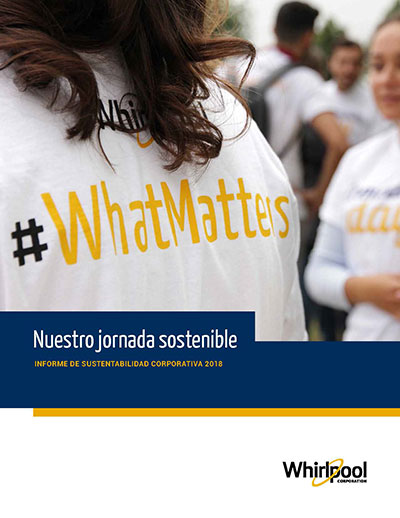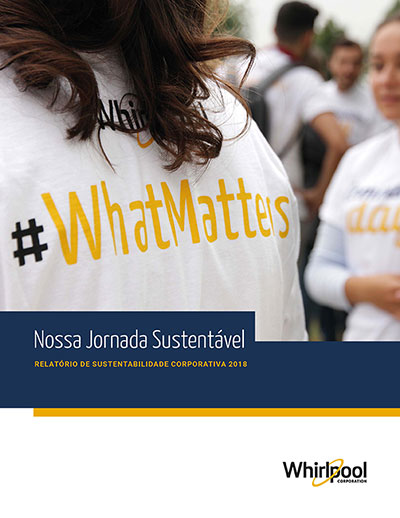to Sustainability

Whirlpool Corporation’s commitment to sustainability began nearly half a century ago. Today we are accelerating our progress by delivering on our commitments to improve the environmental efficiency of plants and products while making a positive impact on people and the planet. Our sustainability agenda encompasses stakeholder engagement, executive accountability and science-based methodology to focus on actions that drive absolute and positive environmental and social impact. By embracing sustainability throughout our global organization, we’re demonstrating that sound corporate citizenship and environmental stewardship are also good business.
Guided by a strong sense of purpose, we are committed to taking action to address climate change and the current, unsustainable rate of resource depletion. By driving product efficiency, reducing GHG emissions and improving efficiency throughout operations and our supply chain, we can make a meaningful contribution in addressing these profound global environmental challenges. We recognize that this commitment must be embedded in our standard business practices everywhere we operate in order to achieve the necessary scale of response.


For generations, Whirlpool has produced high-performing, high-quality appliances that have freed millions of people from laborious tasks, enabling more time for family, friends and personal pursuits. Those social benefits are joined by environmental ones as well: offering products with dramatically reduced energy and water requirements that also increase capacity and improve performance. We are digitizing our products to create new levels of performance and efficiency and offer new services and innovations. Our work at the ReNEWW House, a world-class research laboratory and sustainable living showcase, explores improvements that go beyond the appliance itself. This research seeks to determine how appliances, other systems in the home, the consumer and the electrical grid can interact in ways that are much more energy and resource efficient.
Our emphasis on resource efficiency has led us to develop Design for Environment tools to deliver more sustainable products that use more recycled content. These capabilities will help us fulfill our commitment to use 100 percent recycled content on major plastic components in our European products by 2025, as well as to use a majority of recycled-content steel. We are also increasing transparency by offering insight into all the substances of concern. A new full materials transparency system was piloted in 2018 and will go into full launch in 2019, beginning in our EMEA region.
Whirlpool has always viewed the social and economic prosperity of communities in which we operate, and where our more than 90,000 employees live, as central to our success. We want each of our global facilities to be not only good neighbors to their nearby communities – we want them to be models of efficiency and environmental stewardship, and to be strong partners in addressing community needs. We are maximizing our renewable energy deployed on-site, which has, on average, doubled each year for the last three years in accordance with our goal. Going forward, that commitment will continue to grow, aligned with aggressive internal targets. After achieving our energy and water intensity goals three years early, we continue to focus on energy and water efficiency measures, which are now integrated in our new Whirlpool Production System, based on World Class Manufacturing (WCM) principles. In fact, we have also increased our energy-efficiency target by almost 50 percent compared to our 10-year average.
Whirlpool is also committed to a zero-waste-to-landfill future, and eight of our global facilities have achieved zero-waste status. Additionally, we continue to make progress on our nonproduction facilities as well, having 14 of them at zero waste in 2018. From a social perspective, our partnerships with respected nonprofits such as Habitat for Humanity International are addressing needs like affordable housing. Over the last two decades more than 100,000 families worldwide have benefited from our philanthropic and volunteer efforts on behalf of Habitat for Humanity programs.



Integrating sustainability considerations into every aspect of how we design, source, manufacture, distribute, market and manage end-of-life for our products is a foremost objective for Whirlpool in 2019. We have restructured our approach to improve connections within our key internal teams, assigning executive owners for each of our six key initiatives in our plants, products and practices strategy. The aim is to not only continuously improve our process and execution, but also to invest in breakthrough performance. Whirlpool firmly believes sustainability is an avenue for continued growth, and we are determined to discover new ways to address the world’s pressing environmental challenges as we become a more efficient and effective organization.



